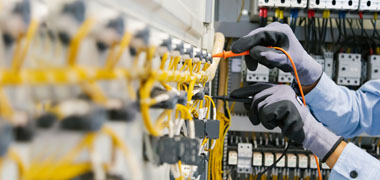
How do I become a printing machinist?
Certificate III in Printing
- There are no mandated entry requirements.





Certificate III in Printing (Lithographic Printing)
- There are no mandated entry requirements.
 TAFE NSW
TAFE NSW
Certificate III in Printing (Flexographic Printing)
- There are no mandated entry requirements.
 TAFE NSW
TAFE NSW
Related occupations
Pre-Press Operator
A Pre-Press Operator prepares text and images for printing, ensuring quality and layout, while using software and equipment for production.
Publisher
Publishers manage the printing and production processes in publishing houses, overseeing teams and coordinating the creation of various printed materials.
Publishing Assistant
A Publishing Assistant supports publication production by coordinating schedules, proofreading, and liaising with designers and printers.
Publishing Coordinator
A Publishing Coordinator manages publication production, coordinating teams, editing content, and ensuring timely project completion.
3D Printing Technician
A 3D Printing Technician operates and maintains 3D printers to produce prototypes and finished products, ensuring quality and efficiency in the process.
Common questions
How much does a Printing Machinist earn?
In Australia, a full time Printing Machinist generally earns $1,281 per week ($66,612 annual salary) before tax. This is a median figure for full-time employees and should be considered a guide only. As you gain more experience you can expect a potentially higher salary than people who are new to the industry.
What are the job opportunities for a Printing Machinist?
This industry has experienced a drop in employment numbers in recent years. There are currently 4,400 people working as a Printing Machinist in Australia, compared to 6,500 five years ago. Printing Machinists usually work in larger towns and cities where printing facilities are located.
Source: Australian Government Labour Market Insights
How do I become a Printing Machinist?
If you’re interested in a career as a Printing Machinist, consider enrolling in a Certificate II in Printing and Graphic Arts. This course will give you the skills to work with a range of printing machines and digital technology programs. You’ll cover a range of topics including pre-press, screen printing and binding and finishing. A Certificate III in Printing may also be appropriate.
Further reading


Choosing a security licence course in Australia: A step-by-step guide for jobseekers
10th November 2023)

